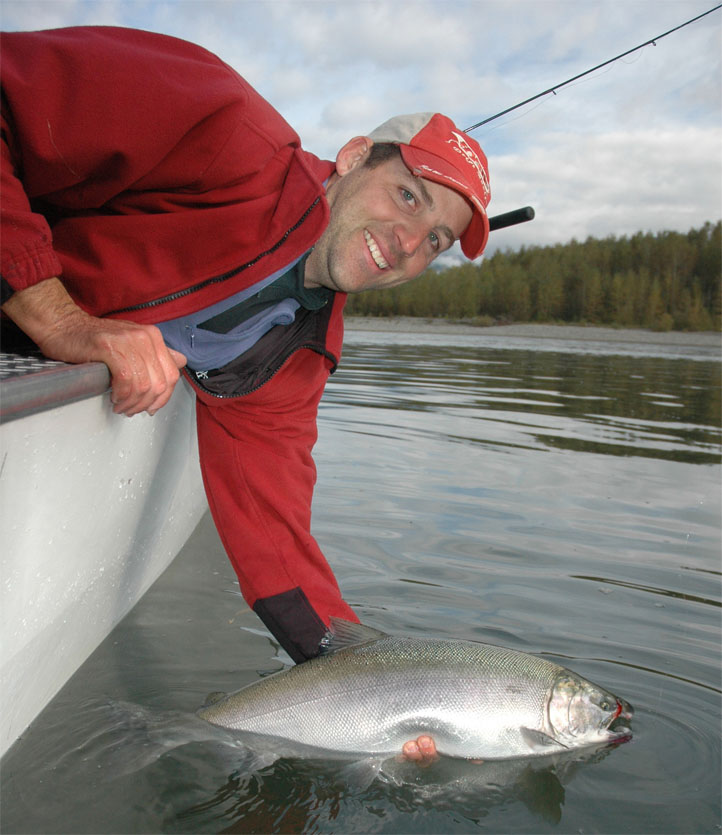Twitching Jigs for Fall Salmon 2

Twitching marabou, zonker strip, and hoochie-skirted jigs for fall coho has proven to be a deadly technique on the rivers of Western Washington for fickle, lock-jawed silvers. 1/8 to as large as 1/2 ounce jigs in sizes 1/0 and 2/0 are optimal and effective colors span the spectrum. When most other techniques fail to draw the attention of silver salmon the jig twitching method will usually grab the eye of wary coho.
Unlike fishing jigs under a float where the current imparts all the action to the jig, in “twitching” the motion of the rod gives the jig its action. There's no float, either, just you, your rod, and a small jig. A simple flick of the wrist is all that’s necessary to make the jig dance and drive fish into striking. After each twitch of the wrist a small amount of line is reeled in to keep slack out of the line and the action is repeated over again all the way back to the boat or shore.
The twitch itself is perhaps the most important aspect of this technique and too long a stroke on the rod will usually produce less strikes than a short, compact twitch. Moving the jig vertically anywhere from 6” to 18” is ideal.
A medium to fast action spinning rod is ideal for this method, matched with the appropriate spinning reel and 8 to 12 lb mainline. For twitching jigs in deeper water with heavier current it’s best to run a leader of lighter test to a small barrel swivel and then apply however many split shot are necessary to get the jig to the desired depth. The barrel swivel will keep the split shot from sliding down the line.
Though color isn’t as important as presentation, some colors that have been super effective for me over the years are black, purple, cerise, pink, or orange. They’ve been known to hit just about any color, however, and mixing colors can often produce strikes.
Another deadly addition to the jig is an 18 count sand shrimp tail. If tying your own jigs or buying them at the store it’s important that the jigs have enough marabou or rabbit strip tied in to give them sufficient action. Jigs with more material in the body and a tail take on a life of their own in the water and impart much more action than a short jig with less material.
Jigs for fall falmon are best fished in areas with very low current or what's often referred to as “frog water”. Side channels or low gradient, deep pools, where salmon congregate are great places to start. Current seams and drop offs with heavier current can be fished by using the split shot rig mentioned above.
Jump on over to the VIDEO page to watch Forks, Washington guide Bob Kratzer demonstrate how to properly fish a jig for fall salmon on the Olympic Peninsula. Add this technique to your bag of tricks for catching fall salmon on the Pacific Northwest rivers.


Twitchin' is a gas!!! I can hardly wait until the silvers show in force and we can "Get twitchy with it"!
Great info Robbo, I was hoping to try this technique in Lake Wa this year but with the closure...Stay tuned, maybe it'll re-open.